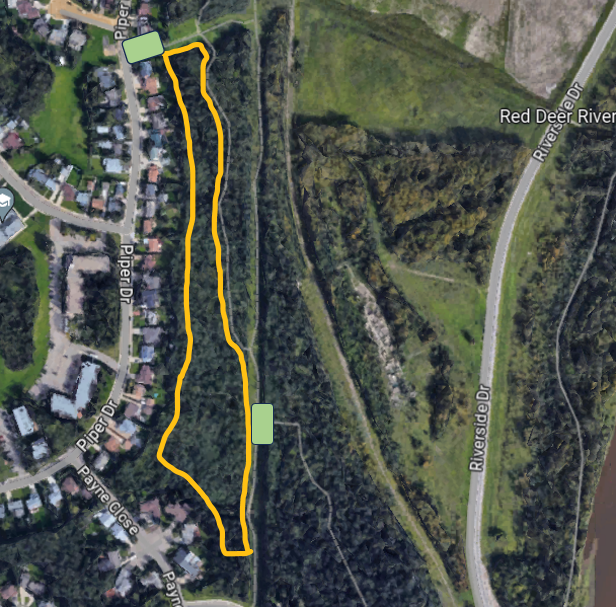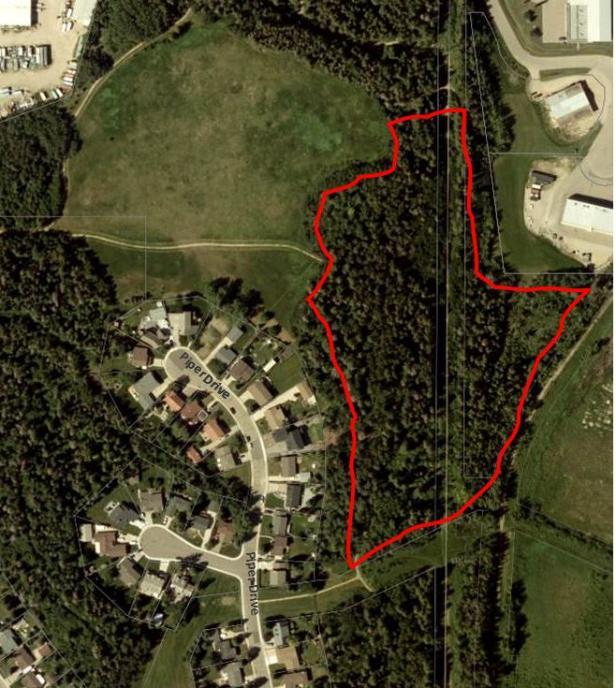No, for the past 20 years The City of Red Deer has proactively worked to reduce fire risk in the urban forest system by reducing fuel loads in prioritized areas.
Urban Forest Fire Mitigation
Along with the annual tree risk mitigation work already underway, fire prevention work happens in certain areas of Red Deer’s urban forest during the winter months.
Starting January 2024, crews will be working to reduce the potential fire load in the forested area east and north of Piper Drive.
Area 1:
Area 2:

Frequently Asked Questions
Wildfires are posing a growing threat to communities in Canada, and The City of Red Deer is taking a proactive approach by reducing potential fire fuel load in areas of the urban forest system. This work follows FireSmart principles and is done to increase public safety and to lower the risk of property and infrastructure damage.
Beginning mid-January, crews will begin proactive fire fuel load reduction work on public land east and north of Piper Drive. Work will happen in the vicinity of the Altalink right-of-way, and at least 20 metres from private property. This is a continuation of the work that began last year in this area.
With the growing threat of wildfires in Canada and Alberta in recent years, combined with current drought conditions in the province, we anticipate next year’s fire season to be worse than last year. By being proactive and reducing fuel load, we are protecting Red Deer’s urban forest from wildfire threat.
This area, east of the Pines was selected because it is densely forested, and may be difficult to access with firefighting equipment.
This work is limited to trees and limbs that are dying or damaged. When we are done this work you can expect to see the removal of select dead vegetation. Dead tree that needs to be removed will be felled, with limbs processed through a chipper and fallen logs left in place.
Decomposing wood performs a key and integral role in the forest ecology, and helps to maintain the overall health of the forest and regeneration. Decomposing logs are often very moist and a difficult fire fuel.
No, per Parks and Public Facilities Bylaw 3255/2000, logs and wood must not be removed from urban parks and forests. Any logs that are left were done so intentionally with the forest ecosystem in mind.
Urban encampments are a reflection of the complex social challenges facing cities across Canada. Should crews encounter urban encampments while conducting this work, we will follow the camp clean up process, which involves connecting people sleeping rough to social supports and housing. If you come across an urban encampment, report it to the non-emergency police line at 403-406-2200.
This work is being done by urban foresters and ecologists who consider the health of not only the forest, by the animals who call it home. It is completed during winter months for easier adherence to the Migratory Bird Act and to reduce damage to the forest ecology. Dead trees with nesting cavities or holes will be preserved as valuable habitat.
